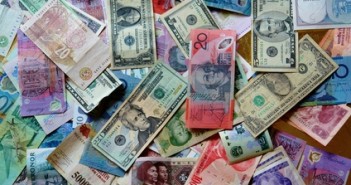Benchmark US 10 year bond yields recently touched the 2% mark. This round number is the highest since April 2012. The move has been attributed to the growing chances that the Fed’s quantitative easing could be unwound at the end of the year.
Those chances remain low. Other forces are also in play. If higher yields are sustained, Japan’s mountain of debt could turn into a bursting volcano.
The recent FOMC meeting minutes revealed that some members think that the current open-ended QE program could be terminated towards the end of the year, given the improvement in the US economy.
The presence of hawks in the FOMC isn’t new: Lacker has been a permanent dissenter. However, the Fed is still controlled by the doves, with Ben Bernanke leading the camp.
The improvement in the US economy is evident in many fields, but remains slow.
The gains in jobs are quite steady, around 150K a month. Without a significant rise in jobs gains over a few months, it is hard to see the dovish central bank make a move.
There are other reasons for the rise in yields, and they come from reduced fears: a reduced need for safe havens – US treasuries.
- European debt crisis: the improvement in market sentiment following the introduction of Draghi’s OMT now sends lots of money to the euro-zone. The once risky bonds of Italy and Spain are now seen as cheap. These flows lift the value of the euro, and are certainly counterproductive to growth and to a real exit from the European debt crisis. “Positive contagion” from the financial markets to the real economy is still to be seen. Nevertheless, some of these flows come from the earlier-sought safe haven US treasuries.
- The improvement in the political situation in the US: the fiscal cliff was averted after the last minute, but this was good enough. Also the debt ceiling was pushed back to May. The upcoming hurdle is the sequester, pushed back to March. The current sentiment is positive: markets belive that some kind of solution will be found. A short term solution, something that politicians are good at, doesn’t bother the markets at the moments. Yet again, the flight to safety doesn’t attract many passengers.
What is the impact?
The Federal Reserve will find the recent rise in yields as a justification to continue its bond buying policy – a move that will lower the yields and make borrowing more attractive. This goes hand in hand with the need to stimulate the job market and the low inflation.
In addition, this may have an impact on Japan: USD/JPY is influenced by US yields: higher US yields push USD/JPY higher. The pair has already leaped in recent months thanks to the Japanese determination to fight deflation at home.
The weaker yen certainly helps exporters and the Japanese stock market, and also makes Japanese bonds less attractive. With higher US yields, investments in Japanese bonds could flow to the US: which has a strengthening currency and offers higher yields.
The Japanese authorities could get more than they wished for: not only a weaker yen, but also higher Japanese bond yields – higher borrowing costs. It is important to remember that Japan has a national debt of over 200% of GDP. It would be the “Greece of Asia” if it weren’t for the fact that most of the bonds are held by domestic investors.
Japanese bonds have long been safe havens, alongside the Japanese yen. But as the yen is devalued, so can Japanese bonds. Any rise in borrowing costs is very costly for a country which has a high mountain of debt.
US yields are certainly worth watching regarding all these aspects.
Further reading: Europe unlikely to join the currency wars
